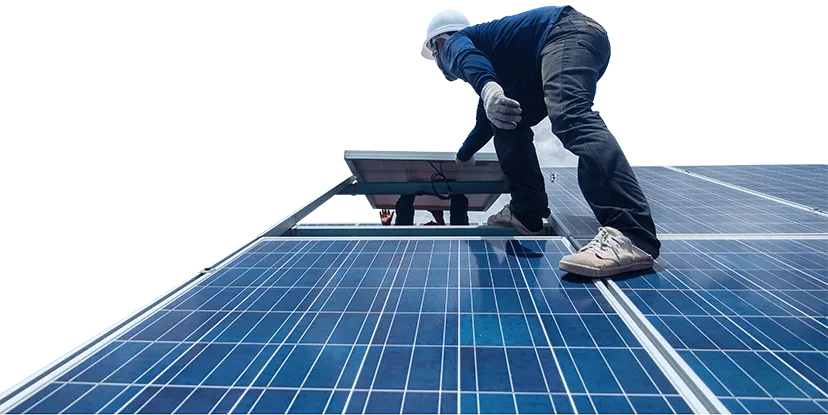Commercial Solar Setup
A commercial solar setup for renewable energy refers to the installation of solar photovoltaic (PV) systems in business or industrial settings to generate electricity using solar power. This setup is typically larger in scale compared to residential systems and is designed to meet the energy needs of commercial buildings, factories, warehouses, shopping centers, office buildings, or even large enterprises. The goal is to reduce electricity costs, lower carbon emissions, and enhance energy independence.
Here’s a breakdown of what goes into a commercial solar setup and how it works:
- Site Assessment and Feasibility
Energy Usage Analysis: The first step in setting up a commercial solar system is to analyze the building’s energy consumption. By examining historical energy bills and understanding the peak demand times, engineers can design a solar system that meets or exceeds the energy needs of the business.
Roof/Space Evaluation: A physical assessment of the building’s roof or available land is necessary. For rooftops, factors like size, orientation (south-facing roofs are ideal in most locations), shading, roof condition, and angle will be evaluated. Ground-mounted systems may also be an option for large properties or those without suitable roof space.
Regulatory and Zoning Compliance: The system must comply with local building codes, zoning laws, and permitting processes. Depending on the location, the system may also be eligible for incentives, rebates, and tax credits
- System Design and Sizing
Solar Panel Selection: For commercial setups, high-efficiency panels are usually preferred to maximize energy production per square meter. Panels are chosen based on factors like efficiency, cost, lifespan, and warranty.
Sizing the System: The size of the system is determined based on the business’s energy needs, which include evaluating average daily electricity consumption, peak demand, and whether the business intends to fully offset its energy usage or just reduce its reliance on the grid.
Component Selection:
Inverters: For commercial solar setups, central inverters or string inverters are typically used to convert DC power generated by the panels into AC power used by the building. In some cases, microinverters (which are installed on each panel) can be used for maximum efficiency, especially in cases where panels are shaded unevenly.
Racking and Mounting Systems: The system includes racking and mounting hardware to secure solar panels on the roof or on the ground. Engineers will ensure the system is designed to withstand wind loads, snow, and other environmental conditions.
Monitoring Systems: Commercial systems often incorporate advanced energy management software and monitoring tools that allow business owners to track real-time solar energy production, monitor performance, and optimize energy use.
- Energy Storage (Optional)
Battery Storage: For businesses looking to maximize energy independence, an energy storage system (such as lithium-ion batteries) can store excess solar energy generated during the day for use at night or during periods of high demand. This is especially useful for businesses with high energy demand during non-sunny hours.
Hybrid Systems: In some cases, businesses may use a hybrid system that combines solar with backup generators or other renewable energy sources to ensure constant power availability, especially for businesses that operate 24/7 or in critical industries.
- Grid Connection
Grid-Tied Systems: Most commercial solar systems are grid-tied, meaning they are connected to the utility grid. In this case, businesses can draw power from the grid when their solar system isn’t producing enough energy (e.g., at night) and send any excess energy back to the grid, potentially earning credits or payments through net metering.
Net Metering: Net metering is a billing arrangement where businesses are credited for the surplus energy they export to the grid. This can reduce electricity costs and create a more favorable financial model for the business.
Off-Grid Systems: Some businesses in remote areas may choose to install an off-grid solar system with batteries to avoid reliance on the grid. However, this is more expensive due to the need for storage and backup power solutions.
- Installation Process
Pre-Installation Planning: This includes finalizing the design, securing permits, and ensuring all components are on hand. Installation often takes a few weeks, depending on the complexity and scale of the system.
Electrical Setup: The installation involves connecting the solar panels, inverters, and electrical components to the building’s main electrical panel. For larger commercial systems, dedicated electrical panels may be required to handle the load.
Grid Interconnection: The system is connected to the local grid, and necessary safety features such as disconnects and protective devices are installed.
behalf of our clients every day, we anticipate what they want, ineed and build lasting relationships.



